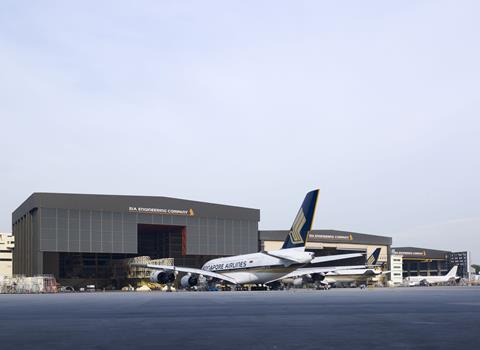Air India has selected SIA Engineering (SIAEC) to develop its base maintenance facilities in Bangalore, as part of a strategic partnership between the two pair.
Under the agreement, SIAEC will work with Air India on the planning, construction and development of the facility, as well as its subsequent operation.

The base maintenance facility, which is expected to be ready in 2026, will have widebody and narrowbody hangars and associated repair shops, says Air India.
Air India’s move follows its divestment by the Indian government in 2022, which saw only the airline business privatised.
Former MRO unit Air India Engineering Services (AIESL), which used to provide base maintenance works for the national carrier, remained under government control, though Delhi is reportedly looking to similarly divest the business.
Campbell Wilson, Air India chief executive, says: “The collaboration with SIA Engineering Company will not only help Air India become more self-reliant for the maintenance of its own fleet but it also reiterates our commitment to strengthen India’s aviation infrastructure by boosting the growth of the country’s MRO industry.”
SIAEC is also looking to grow its presence in overseas markets. “This appointment marks another significant milestone in the development of the partnership between Air India and SIAEC. Going forward, we hope to have even more opportunities to collaborate with Air India in the MRO space in India,” says chief executive Chin Yau Seng.
SIAEC ekes out full-year profit
SIAEC has swung to a full-year operating profit on the back of MRO demand recovery. The MRO unit of Singapore Airlines posted an operating profit of S$2.3 million ($1.7 million) for the year ended 31 March, compared with a S$26.3 million loss in the year-ago period.
Full-year revenue grew 37.5% to S$1.1 billion, with increases seen across all business units. SIAEC’s line maintenance business handled 39% more flights compared to the previous financial year, while base maintenance demand “remained healthy” during the year.
The company saw a 32.8% increase in operating costs to slightly over S$1 billion, led by a rise in manpower costs and materials usage.


























